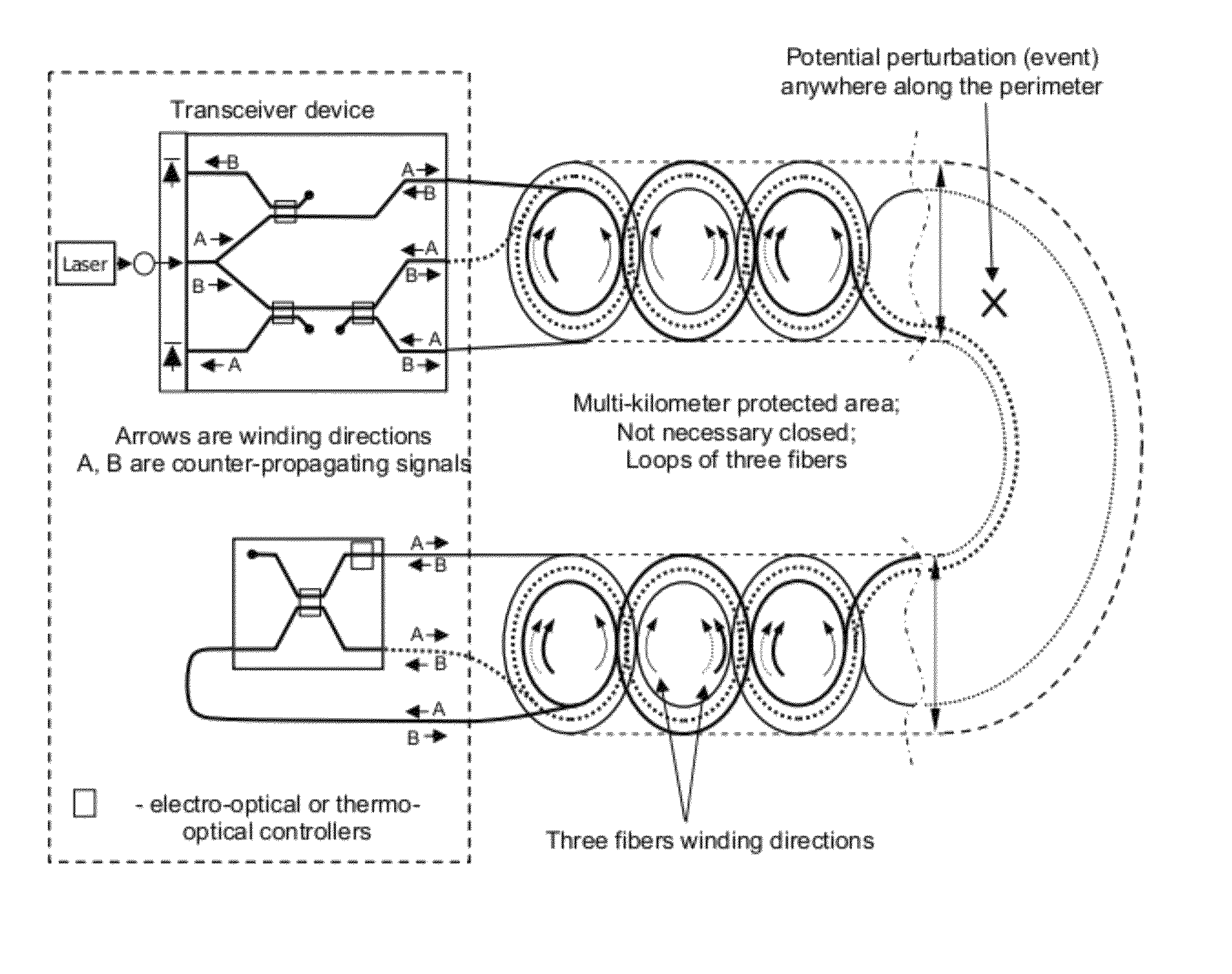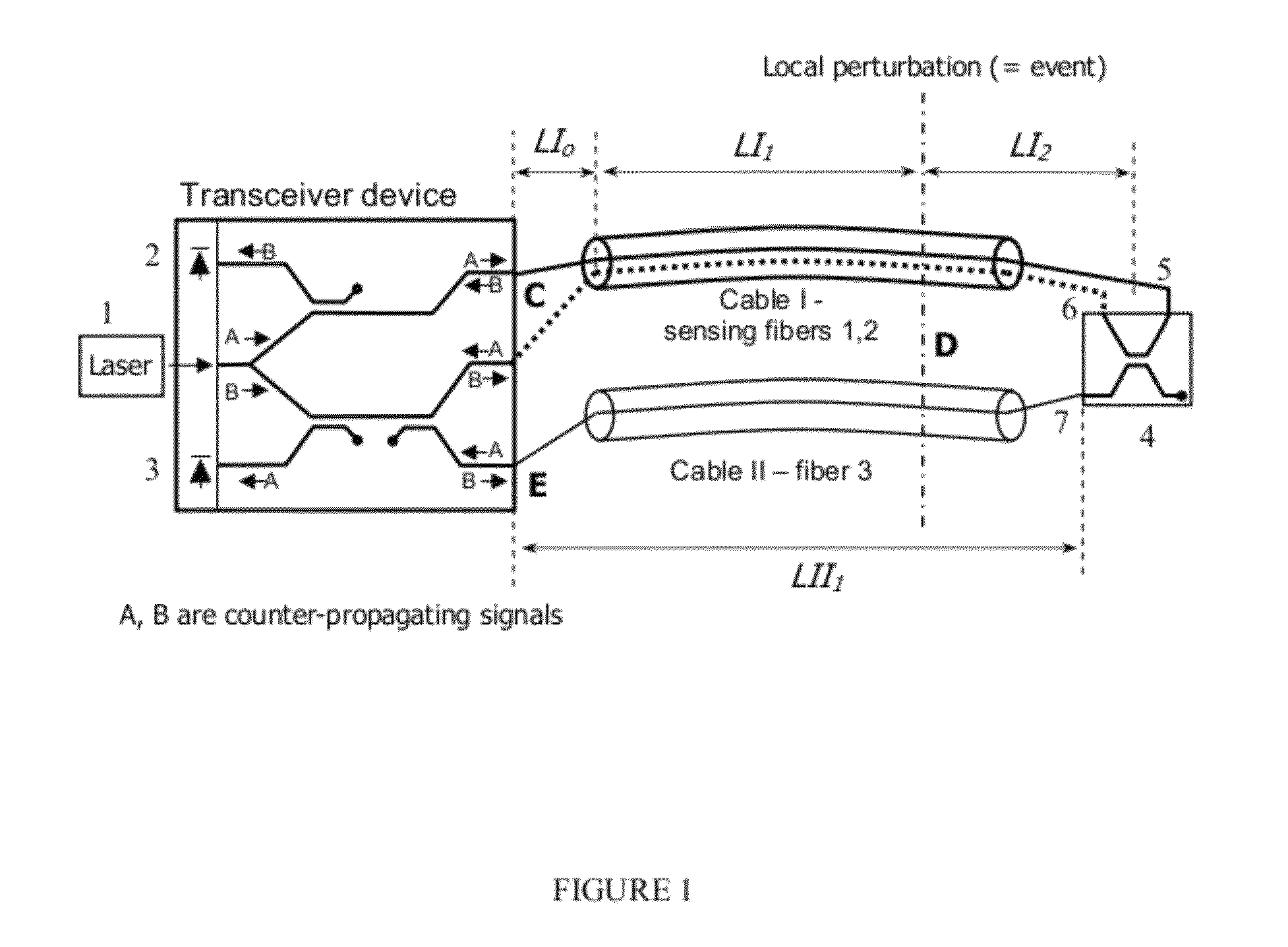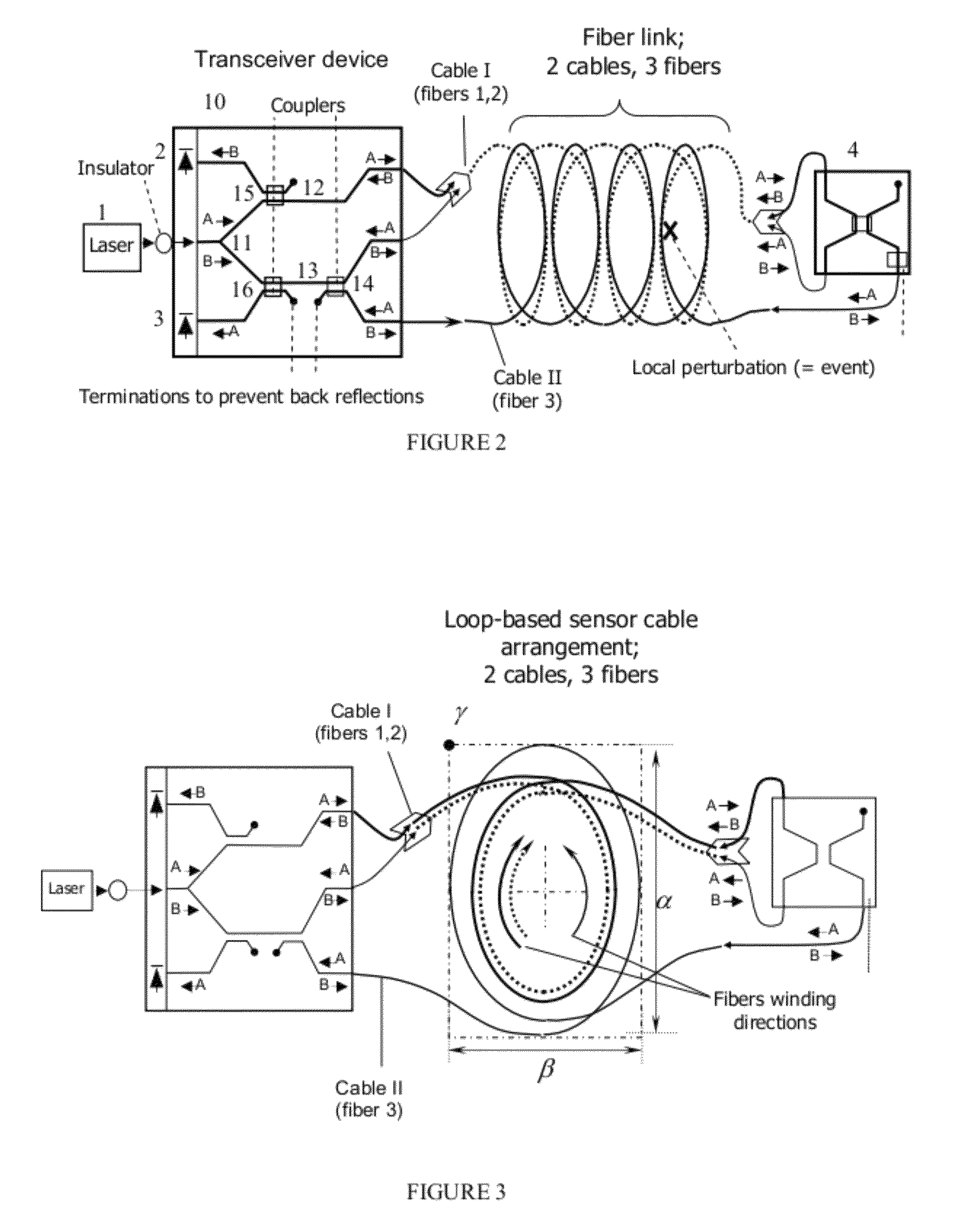Optical sensor for detecting and localizing events
a technology of optical sensors and events, applied in the field of optical fences, can solve the problems of limited sensitivity and immunity to various noises, system optimization not fully optimized for use in applications, and prior art does not provide such desirable functionality
- Summary
- Abstract
- Description
- Claims
- Application Information
AI Technical Summary
Benefits of technology
Problems solved by technology
Method used
Image
Examples
Embodiment Construction
[0036]The present invention will now be described more fully hereinafter with reference to the accompanying drawings, in which the preferred embodiments of the invention are shown. This invention may, however, be embodied in many different forms and should not be construed as limited to the embodiments set forth herein; rather, these embodiments are provided so that this disclosure will be thorough and complete, and will fully convey the scope of the invention to those skilled in the art.
[0037]The system is designed for structure monitoring and disturbance detection and locating. The sensitivity to the potential perturbation can vary along the fiber cable, depending on the requirements within a particular area. Thus, the sensitivity of the system at particular area can be optimized in terms of local structural layout, depend on how often the perturbation occurs (event probability) or reflect the different types of event within different areas (different types of damage, intrusions, ...
PUM
 Login to View More
Login to View More Abstract
Description
Claims
Application Information
 Login to View More
Login to View More - R&D
- Intellectual Property
- Life Sciences
- Materials
- Tech Scout
- Unparalleled Data Quality
- Higher Quality Content
- 60% Fewer Hallucinations
Browse by: Latest US Patents, China's latest patents, Technical Efficacy Thesaurus, Application Domain, Technology Topic, Popular Technical Reports.
© 2025 PatSnap. All rights reserved.Legal|Privacy policy|Modern Slavery Act Transparency Statement|Sitemap|About US| Contact US: help@patsnap.com



